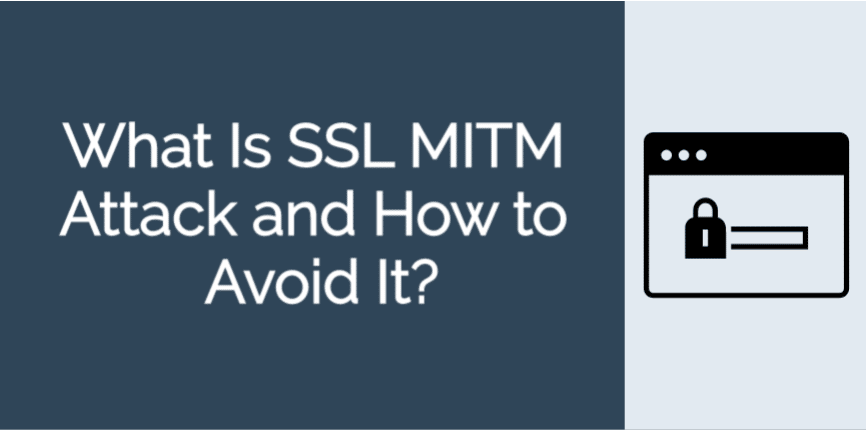From the last two decades, people tend toward online shopping, and e-business has been increasing. Likewise, the demand for web security is also boosting because financial transactions and private information exchange are done at a high level on e-commerce sites. So, SSL is being used in most of the e-commerce sites as it is the best security solution to avoid online threats. SSL is a protocol which used to encrypt the connections between a web user and a web browser for securely done online communication and transaction.
What is SSL Hijacking or SSL Sniffing?
SSL sniffing are malicious actions which are done to intercept and read the SSL encrypted traffic using a MITM (Man in the Middle) proxy. SSL sniffing is also known as SSL MITM, HTTPS Sniffing or SSL hijacking, usually, hackers use this sniffing to steal any private information like Credit Card Number, Bank Detail, Account login detail, and Personal Identification Number on any system or network.
How Does SSL Sniffing Work?
Usually, a web server provides its certificate to a web browser while connecting; the web browser checks the certificate and verifies the information that is contained in such certificate. If the certificate is valid, then the browser and the server accept it, and the browser both starts negotiating on a basic level of encryption for secure data communication. On the contrary, if the certificate is non-trusted or expired, a warning sign is shown on the web browser.
But, in SSL sniffing, the hacker behaves an untrusted authority. Hacker creates own certificate in the name of domain name and sign it as CA. MITM proxy hijacks the session and enters into the network for intercepting the traffic that is being exchanged between the web browser and the server to steal the communicating information. Moreover, an edited certificate might be directly put on the user’s computer to mislead the browser in authenticating the certificate and, this duplicate certificate allows the hackers to create a secure connection with both the browser and the server. In such a case, it is unfeasible for users to notice that their pc or browser is hacked for data stealing.
How to avoid SSL Sniffing?
SSL sniffing can harm any corporate or individual. So, there should be some protective measures to avoid it. Some of those are described below:
Implementation of Authentication Certificates
Hackers evolve their hacking tricks by the time, therefore getting rid of them ultimately is impossible. But you can do a possible thing that can stop them penetrating with your systems like internal networks email systems, Wi-Fi networks. The implementation of Authentication Certificates is such a thing that allows only authenticated employees or devices to connect to the system. Usually, such certificates are user-friendly, and they do not need any professional training to operate.
Installation of SSL/TLS Certificates
If sensitive information is transferred on your website, it is quite essential to upgrade your HTTP protocol with SSL/TLS Certificates. TLS is a safer version of SSL certificate that provides an encrypted and secure connection between a web server and a web browser to protect the private information from hackers. For more advanced security, you can install Organization Validated (OV) or Extended Validation (EV) SSL certificate on your website, it binds together your domain name and your organizational identity which boost the customer’s trust on your website and, the organization name just left in the URL bar does not let customers misled by malicious websites.
Keep Examining the Web Traffic
If you want to protect your website and corporate systems from MITM (Man In The Middle) attacks, invest in detection solution that will notify you whenever anybody tries to be hindering your systems. This detection software tracks the web traffic in real-time that is created on both port and protocol layers. It notifies you in advance about the malicious activities and can block such traffic if necessary.
Create VPNs
You can create VPNs for secure data exchanging within your organization. It is Key-based encryption that allows only authorized parties to see the decrypted data. VPNs make it impossible for attackers to interfere in the organizational systems.
Invest in Data Signing
Data Signing software like Confirm What You See (CWYS) allows users to confirm their entered information such as the bank name and bank account number, the amount of transaction, money, or time is correct. An OTP (One Time Password) is sent to the user’s phone number for confirming the information. If the attacker hacks the login information or even an OTP, they can only do the current transaction that is created by the user. They cannot do more transaction, because next time the OTP will change. Thus, make sure to invest in such software.
Conclusion
SSL MITM attacks can occur any time on your corporate system, and it can even fold up your business thoroughly, so implementation of methods mentioned above is necessary for your corporate for maximum protection from SSL hijacking. Always, update your entire systems (internal network, Wi-Fi, corporate PCs or website) with new versions and keep an eye on the evolving hack technologies, because the cybercriminals are always functioning on new methods to perform SSL MITM attacks.

